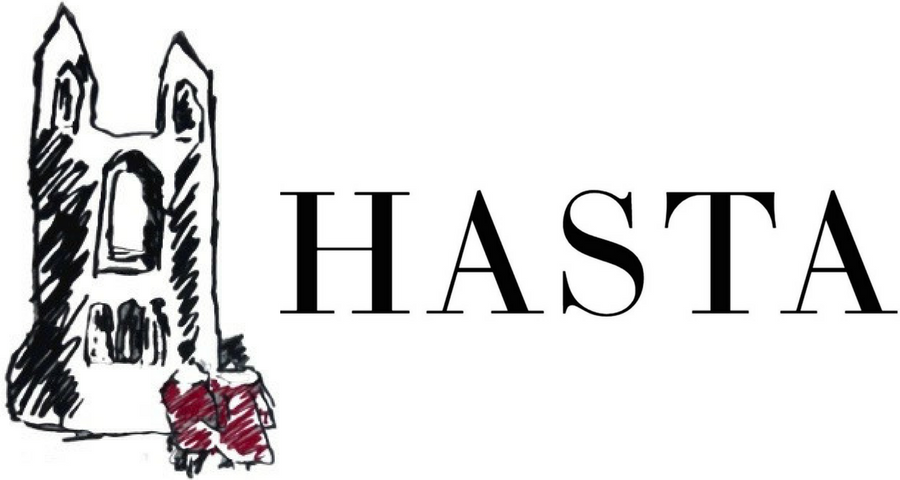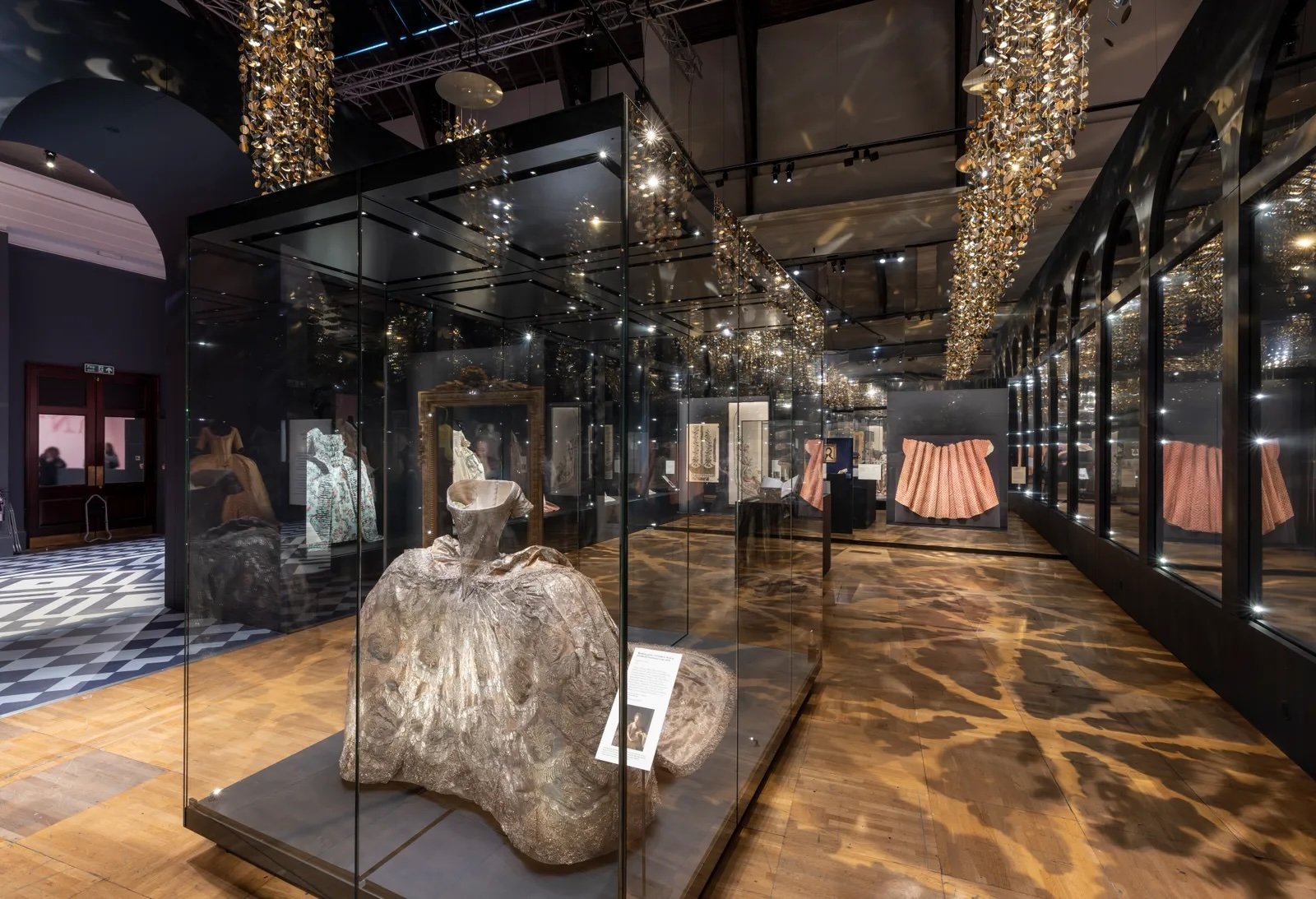The Aestheticization of History: Marie Antoinette and the Politics of Display
By Hanna Yoon
Film still from Sofia Coppola, Marie Antoinette, 2006.
Image courtesy of Sony Pictures.
Few figures have been so obsessively reimagined as Marie Antoinette. She has survived revolutions, films, and fashion cycles, each time returning not as a monarch but as a myth. Her image, endlessly reconstituted, hovers between martyrdom and marketing. The same France that once paraded her severed head now sells her face on floral hand mirrors and pastel hairbrushes. How did the most vilified woman in France become one of its most profitable exports? And what does it mean when the site of her symbolic death – the guillotine of public opinion – becomes the foundation for her aesthetic rebirth?
The Victoria and Albert Museum’s Marie Antoinette Style confronts these paradoxes head-on, proving that the contradiction is not hidden – it’s the point. In a world where reputation is remade by aesthetics, the exhibition feels almost diagnostic – a case study in the politics of beauty, celebrity, and blame. The woman who once embodied the dangers of excess is reborn as an object of desire. The exhibition is not just a resurrection of a queen, but a revelation of art history’s own power to condemn, to consecrate, and to commodify.
Peter Kelleher, The wedding gown of Duchess Hedvig Elisabeth Charlotta, with fragments of a court gown belonging to Marie Antoinette visible on the far back wall, 2025.
Image courtesy of British Vogue.
I couldn’t help but feel a strange tenderness in the way the V&A displays Marie Antoinette. Opening in a hush of powdery pastels and sparkling vitrines, the gowns gleam with the weight of memory and nostalgia. Her corsets – so small they look childlike – sit beside jewels and miniature portraits, objects of exquisite craft and discomforting intimacy. Seeing them in person destabilises the familiar caricature: the heartless queen, the reckless muse of Versailles. Instead, what confronts us is the unsettling material truth of her youth and her body – the body that bore the blame for an empire’s collapse.
(right) Madame Tussaud, Tussaud Head of Marie Antoinette, 1906.
(left) Tim Walker, Kate Moss at the Ritz, Paris, 2012.
Image courtesy of Hanna Yoon.
The curators deliberately create a tension between spectacle and critique. Wax mouldings of Antoinette’s severed, bloodied head sit alongside haute couture pieces by Dior, Chanel, and Vivienne Westwood, dissolving the boundary between artefact and fashion fantasy. Sofia Coppola’s Marie Antoinette (2006), Kate Moss’s themed Vogue editorial, and several designer runways flicker across video projections, their New Wave soundtracks echoing faintly across centuries. The result is an immersive environment that refuses to stabilise: a Rococo dream filtered through twenty-first-century aesthetics. I was caught between admiration and unease, seduced and implicated all at once.
Elisabeth Louise Vigée Le Brun, Marie Antoinette with a Rose, 1783, Oil on canvas, 116.8 × 88.9 cm, Museum of the Palaces of Versailles and Trianon.
Image courtesy of The Met.
Art history has consistently fluctuated between those same aspects. It elevates beauty, then dissects it, canonising the very images it once condemned. In Marie Antoinette’s case, this dynamic feels especially fraught. Elisabeth Louise Vigée Le Brun’s portraits – once dismissed as decorative propaganda – are now celebrated as masterpieces of self-fashioning and female agency. Likewise, Édouard Manet’s Olympia – detested in its time for its audacious gaze – has become a cornerstone of modern art. Art history, ever changeable, rewrites villains as visionaries and moral outrage as aesthetic progress once enough time has passed.
The exhibition’s title – Marie Antoinette’s Style – isn’t simply about fashion; it’s about the aestheticization of history. I found myself walking through her stylised scandals – observing her life through portraits, garments, and historical pamphlets, only to end up in the gift shop. It is impossible to ignore the irony. The same mechanisms that once destroyed her now sustain her myth. If eighteenth-century propaganda rendered her monstrous, depicting her as a serpent and drawing out her rash behaviour, the museum now renders her marketable. Both forms, in their own way, depend on the visual seduction of her image. It seems as if the past always ends in retail. But this irony is not simply cynical – it’s instructive. It forces us to question the ethics of aestheticization itself. Can beauty ever be innocent when built on violence? Can the act of display ever escape the act of consumption?
From an art-historical perspective, I was still able to appreciate the exhibition’s resurrection of Marie Antoinette not as a monarch but as a mirror: a woman who embodies centuries of beauty, guilt, and desire. The tiny waistlines and silk ribbons are not just objects of fascination. In them, we see how the feminine image has always been both a site of reverence and a scapegoat for cultural anxiety. And yet, amidst all the spectacle, the exhibition allows for a moment of quiet revelation. The intimate sketches, the slippers, the delicate embroidery – each suggests a life lived not in grandeur, but in performance. Marie Antoinette’s tragedy was not simply political; she was devoured by her own visibility. Her image outgrew her person, until the two were indistinguishable.
This is where the exhibition – and art history itself – finds its uneasy power. It does not merely document the past; it manufactures its meanings. It can destroy reputations as easily as it resurrects them. It can transform a condemned queen into a muse, a scapegoat into a style icon. To experience Marie Antoinette Style is to watch that transformation unfold in real time: from flesh to fashion, from politics to performance, from history to brand. And perhaps that is the real lesson of the show. Marie Antoinette’s afterlife reveals not only the persistence of her image, but the endurance of art history’s authority – the ability to decide who is remembered, and how.
Julia Garner as Marie Antoinette for Vogue World, 2025.
Image courtesy of Vogue Philippines.
Standing before her portraits one last time, I was struck by how serene they seemed. The powder, the pearls, the gaze – composed, unflinching and knowing. Antoinette looks less like a ghost than a woman who understands the game. She knew, long before we did, that image is power. I can’t help but imagine how thrilled she would be to know that teenage girls now recreate her extravagant, lace-covered gowns for Halloween; that her face adorns beautiful pink postcards; and that her dresses grace designer runways, admired by millions. In the end, the guillotine was only the beginning; art history did the rest.
But that’s precisely the quiet brilliance – and danger – of Marie Antoinette Style. It reveals how easily history slips into mythology, and how museums, with all their authority, can turn judgment into adoration. The same gaze that once condemned her now protects her, and in doing so, absolves itself – allowing us to bathe in the strange discomfort of it. As I leave the gallery, tote bag in hand, it becomes clear that the exhibition is not only about Marie Antoinette. It’s about us – the viewers, the historians, the consumers – who continue to mistake spectacle for remembrance. Art history, ever the loyal flatterer, has ensured she will never lose her crown again.
Bibliography
“About the Marie Antoinette Style Exhibition · V&A.” 2025. Victoria and Albert Museum. V&A. 2025. https://www.vam.ac.uk/articles/about-the-marie-antoinette-style-exhibition?srsltid=AfmBOopdEAdJNwZq66f9hOw18KzAsvLCq84jwWlUiu2b7nPnSBYxP-44.
Bradshaw, Peter. 2006. “Marie Antoinette, Directed by Sofia Coppola.” The Guardian. May 25, 2006. https://www.theguardian.com/film/2006/may/25/cannes2006.cannesfilmfestival5.
Jackson, Hannah. 2025. “Julia Garner Takes on a New Role at Vogue World 2025.” Vogue Philippines. October 27, 2025. https://vogue.ph/fashion/celebrity-fashion/julia-garner-marie-antoinette-vogue-world-2025/.
Seth, Radhika. 2025. “Inside the V&A’s Magical New ‘Marie Antoinette Style’ Exhibition.” British Vogue. September 18, 2025. https://www.vogue.co.uk/article/inside-v-and-a-marie-antoinette-style.
The Met. 2020. “Marie Antoinette with a Rose.” Metmuseum.org. 2020. https://www.metmuseum.org/art/collection/search/656931.





